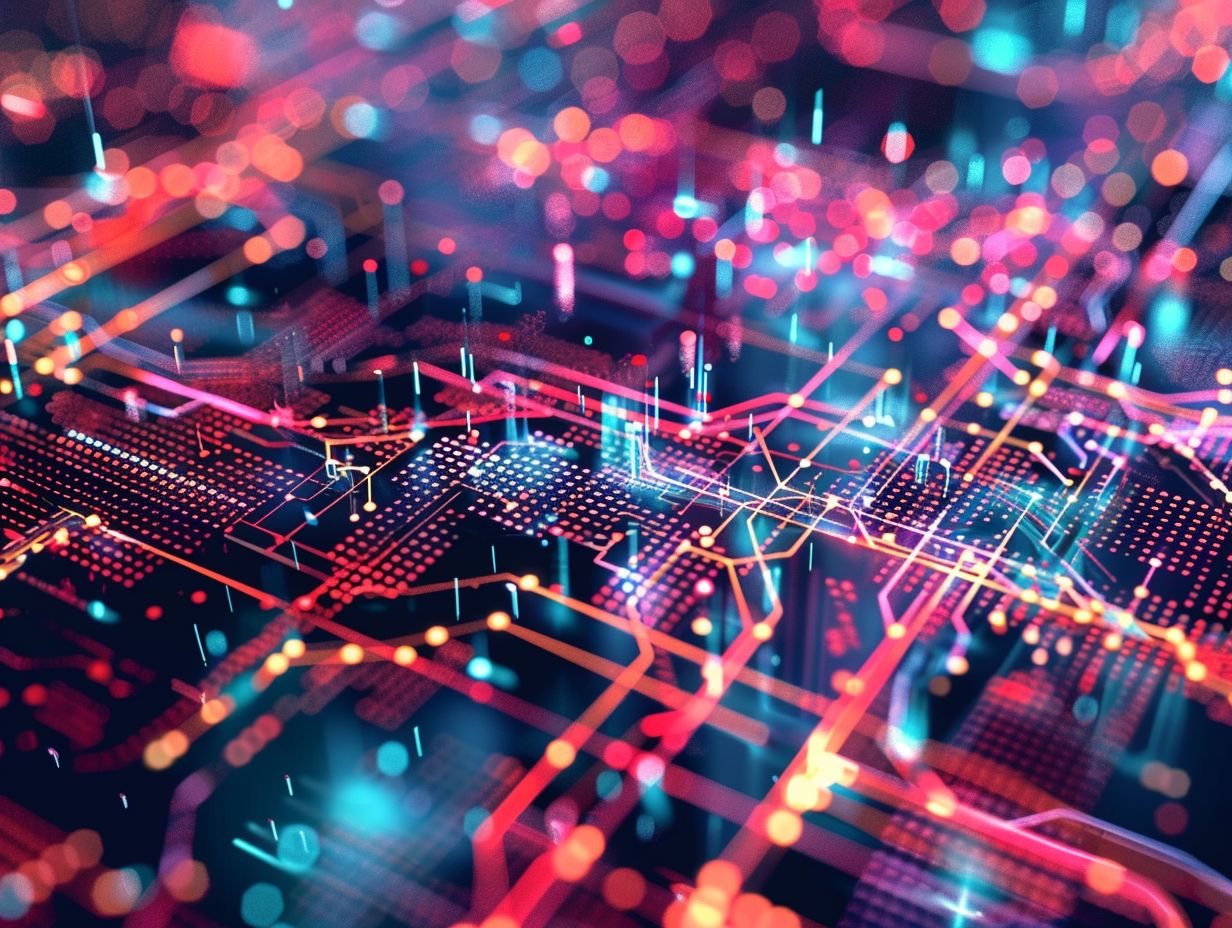The Future of SIEM: Trends and Predictions

In the fast-paced world of cybersecurity, Security Information and Event Management (SIEM) tools are constantly evolving to keep up with the ever-changing threat landscape. From traditional SIEM solutions to modern cloud-based platforms, the evolution of SIEM has been remarkable.
As you explore the current trends in SIEM, you will notice the integration of machine learning and predictions for the future of SIEM, such as increased automation, integration with other security technologies, and the impact of IoT and big data.
Join us as we dive into the world of SIEM and uncover what the future holds for this essential cybersecurity tool.
Key Takeaways:

What is SIEM?
Security Information and Event Management (SIEM) is a comprehensive solution that provides you with real-time insights into your organization’s security posture by collecting, analyzing, and correlating security events and data across your network.
This enables you to proactively detect and respond to security incidents, as SIEM platforms utilize advanced analytics and threat intelligence to identify patterns of potentially malicious activities. By centralizing log management and monitoring, SIEM helps you streamline your security operations, prioritize alerts, and investigate incidents more efficiently. SIEM plays a vital role in compliance adherence by providing detailed audit trails and reports to meet regulatory requirements. SIEM serves as a critical tool in enhancing cybersecurity resilience and safeguarding sensitive data from evolving threats.
The Evolution of SIEM
The evolution of Security Information and Event Management (SIEM) solutions has been driven by technological advancements, changing threat landscapes, and the increasing need for proactive cybersecurity measures to combat sophisticated cyber threats.
Over the years, SIEM technologies have witnessed key milestones such as the integration of advanced analytics, machine learning algorithms, and automation capabilities to enhance detection and response capabilities. These developments have enabled SIEM solutions to evolve from traditional log management tools to sophisticated platforms that provide real-time monitoring, threat intelligence analysis, and incident response orchestration. The adoption of cloud computing, IoT, and BYOD trends has reshaped SIEM capabilities, allowing organizations to achieve greater visibility and control over their digital assets across diverse environments.
From Traditional SIEM to Modern Solutions
The transition from traditional SIEM to modern solutions reflects your organization’s recognition of the evolving cybersecurity challenges and the necessity for more effective and adaptive security measures.
Traditional SIEM systems, while effective in their era, often faced challenges in managing the increasing volume and complexity of data in today’s digital environment. This limitation impeded prompt threat detection and response, leaving your organization exposed to sophisticated cyber attacks.
By incorporating artificial intelligence (AI) and machine learning (ML) technologies, modern SIEM solutions can analyze extensive data sets in real-time, identify patterns, and proactively detect suspicious activities. The automation functionalities of these advanced systems not only streamline security operations but also enable your organization to promptly address potential threats, effectively reducing risks in the constantly shifting cybersecurity landscape.
Current Trends in SIEM

Incorporating the current trends in Security Information and Event Management (SIEM) revolves around enhancing threat detection capabilities, improving incident response times, and streamlining security operations through automation and advanced analytics.
These technological advancements in SIEM are essential for organizations seeking to stay ahead of cyber threats in today’s ever-changing threat landscape. By leveraging AI algorithms and machine learning, SIEM solutions can now proactively identify anomalies and potentially harmful activities, enableing security teams to respond promptly and efficiently. The inclusion of automation features within SIEM platforms not only enhances operational efficiency but also enables real-time monitoring and response to security incidents.
Additionally, the amalgamation of threat intelligence feeds and advanced correlation techniques further fortifies organizations’ defenses, enhancing their resilience against evolving cyber threats.
Cloud-based SIEM
Cloud-based SIEM solutions offer you, as an organization, the flexibility to scale your security operations, centralize data management, and leverage the benefits of cloud infrastructure for enhanced threat intelligence and incident response.
This ability to adapt to changing security needs is particularly advantageous in today’s dynamic threat landscape. By utilizing cloud-based SIEM platforms, you can efficiently manage vast amounts of data generated from various sources, enabling real-time monitoring and analysis for faster threat detection. The scalability of cloud solutions allows businesses to easily expand their security capabilities as their needs grow, without the constraints of traditional on-premises systems. This not only enhances your overall security posture but also contributes to cost-efficiency by eliminating the need for extensive hardware investments and maintenance.
Machine Learning and AI Integration
The integration of Machine Learning (ML) and Artificial Intelligence (AI) into SIEM solutions has revolutionized threat detection and incident response capabilities by enabling automated anomaly detection, predictive analytics, and proactive security measures.
This integration allows organizations to leverage AI and ML algorithms to analyze vast amounts of data in real-time, identifying potential threats and vulnerabilities before they escalate. By incorporating predictive analytics, SIEM systems can forecast security risks based on patterns and historical data, enhancing preventive measures. Behavioral analysis helps in detecting abnormal user activities, highlighting potential insider threats. Automated response mechanisms further bolster cybersecurity postures by rapidly responding to security incidents with predefined actions, reducing manual intervention and response times.
Predictions for the Future of SIEM
The future of Security Information and Event Management (SIEM) is poised to witness a rapid evolution driven by advancements in technology, the convergence of cybersecurity tools, and the increasing sophistication of cyber threats. These advancements are leading to the integration of next-generation capabilities within SIEM platforms, including Security Orchestration, Automation, and Response (SOAR), Extended Detection and Response (XDR), Network Detection and Response (NDR), and User and Entity Behavior Analytics (UEBA). The integration of these advanced functionalities will not only enhance threat detection and response capabilities but also enable more proactive and adaptive cybersecurity strategies.
As organizations continue to prioritize cyber resilience, the adoption of these cutting-edge technologies will play a crucial role in staying ahead of evolving threats in the cybersecurity landscape.
Increased Automation and Orchestration

The future of SIEM will see an increased focus on automation and orchestration in order to streamline security operations, improve response times, and address cyber threats in real-time across organizations of all sizes. These advanced capabilities are essential for organizations to efficiently handle large volumes of security data and alerts.
By automating repetitive tasks and coordinating incident response workflows, SIEM solutions can assist security teams in concentrating on critical threats, like quickly identifying and containing breaches. Automation in SIEM can also support the integration of threat intelligence feeds, enabling proactive threat hunting and enhancing overall security posture.
This proactive strategy not only bolsters defense mechanisms but also optimizes resource allocation, leading to more efficient and effective cybersecurity operations.
Integration with other Security Technologies
The future of SIEM will involve deeper integration with complementary security technologies such as endpoint detection and response (EDR), network detection and response (NDR), and User and Entity Behavior Analytics (UEBA) to create a unified security ecosystem.
This collaboration among diverse security solutions brings about a cohesive defense approach, where the strengths of each component complement and reinforce one another. By merging SIEM with EDR, organizations can swiftly detect and respond to advanced threats at the endpoint level. NDR integration enhances network visibility, facilitating rapid threat identification and containment. The incorporation of UEBA allows for the proactive monitoring of user behavior, enabling the early detection of anomalous activities. With the evolution of unified security platforms, one can expect a harmonized defense mechanism that enables organizations to stay ahead of evolving cyber threats.
Impact of IoT and Big Data
The proliferation of Internet of Things (IoT) devices and the exponential growth of Big Data have profound implications for SIEM systems, necessitating enhanced data processing capabilities, advanced analytics, and robust cybersecurity measures.
Adapting traditional Security Information and Event Management (SIEM) approaches to accommodate the influx of data from interconnected devices poses significant challenges. The sheer volume and variety of data streams generated by IoT devices can overwhelm conventional SIEM systems, leading to operational inefficiencies and gaps in threat detection.
To address these challenges, the future of SIEM implementations is likely to involve the seamless integration of machine learning and artificial intelligence technologies. By leveraging AI algorithms to automate data analysis and decision-making processes, organizations can effectively manage and analyze vast datasets in real-time, enhancing their overall cybersecurity posture.
Frequently Asked Questions
What is the significance of SIEM in the future?

SIEM (Security Information and Event Management) is expected to play a crucial role in the future of cybersecurity, as it enables organizations to centrally monitor and manage their security events, logs, and data. With the constant evolution of threats and regulations, SIEM will be an integral part of ensuring data protection and compliance.
What are the emerging trends in SIEM?
Some of the emerging trends in the SIEM industry include the adoption of cloud-based SIEM solutions, the integration of Artificial Intelligence and Machine Learning, and the use of advanced analytics for proactive threat detection and response.
What are the key challenges facing SIEM in the future?
One of the biggest challenges for SIEM in the future is the increasing volume and complexity of data, as well as the growing number of devices and systems that need to be monitored. Additionally, with the rise of sophisticated cyber threats, SIEM solutions will need to constantly evolve and adapt to stay effective.
How will SIEM solutions evolve in the future?
SIEM solutions are expected to become more user-friendly and customizable, with improved automation and orchestration capabilities. They will also integrate with other security tools and leverage advanced technologies like AI, ML, and behavioral analytics to provide better threat detection and response.
What is the role of compliance in shaping the future of SIEM?
Compliance regulations are becoming increasingly strict, and organizations will need to ensure they have robust SIEM solutions in place to meet these requirements. The future of SIEM will involve more focus on compliance monitoring, reporting, and auditing to ensure adherence to regulations.
What is the future of SIEM in the era of remote work?
The rise of remote work has brought new challenges for cybersecurity, and SIEM solutions will need to adapt to this changing landscape. This may involve more focus on user behavior analytics, as well as the ability to monitor and secure devices and networks outside of the traditional office environment.









